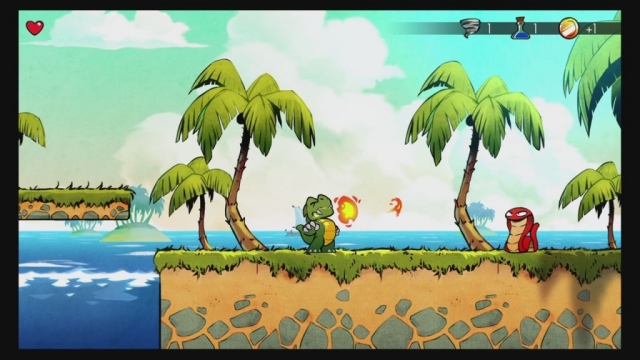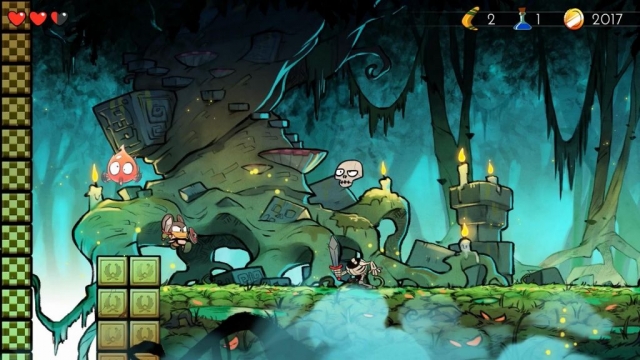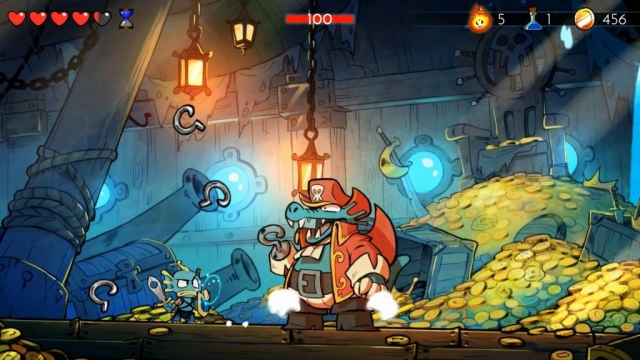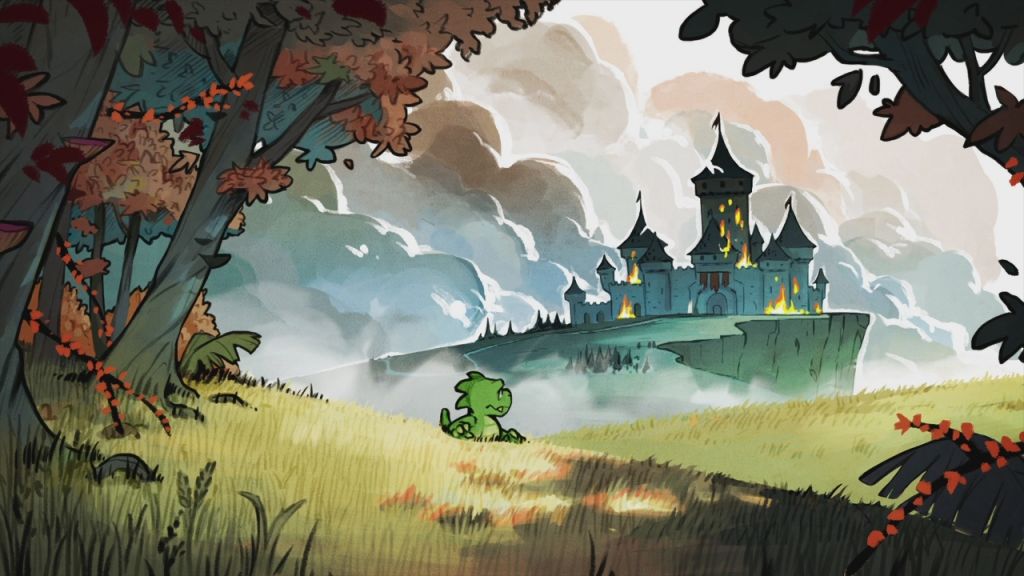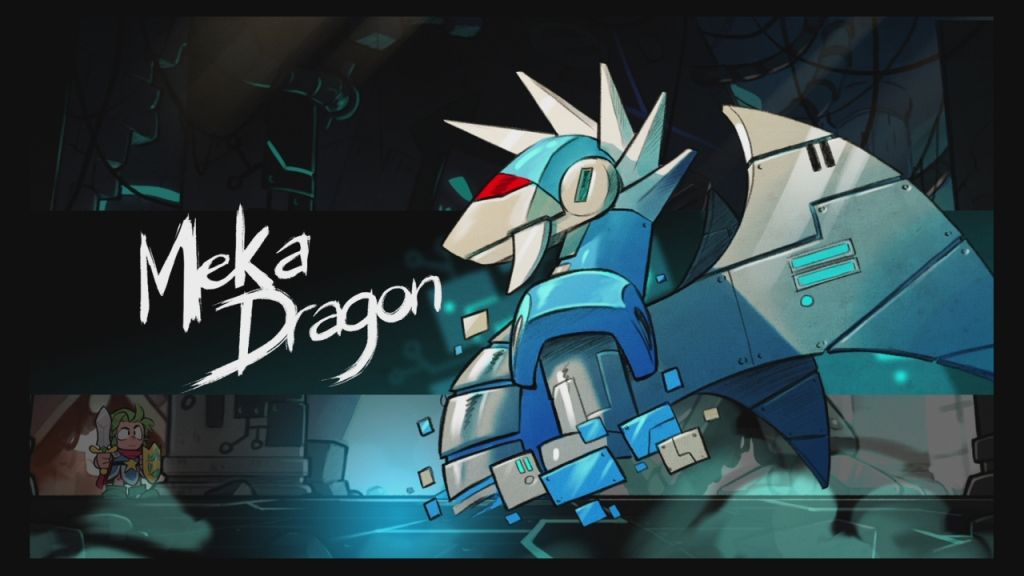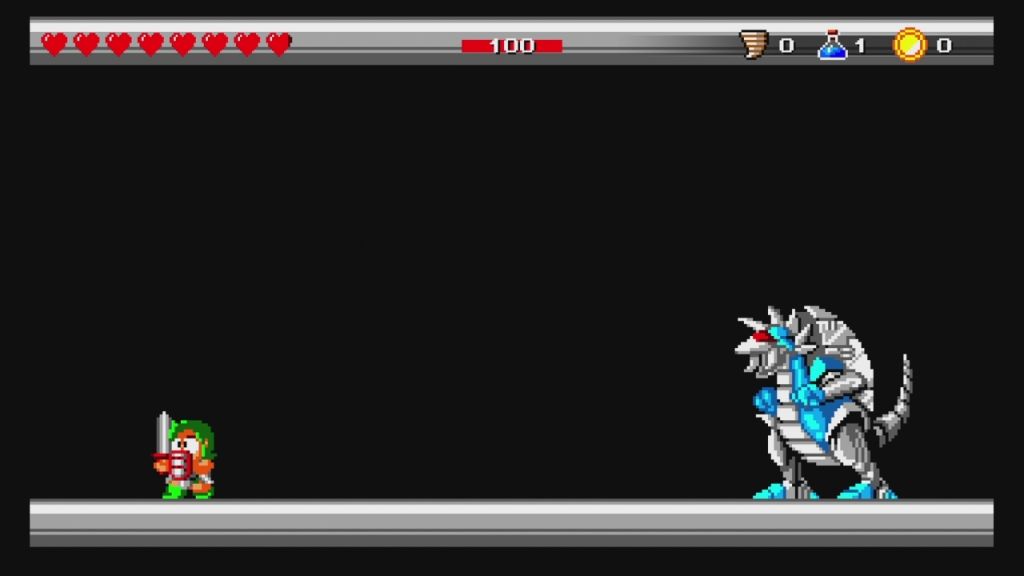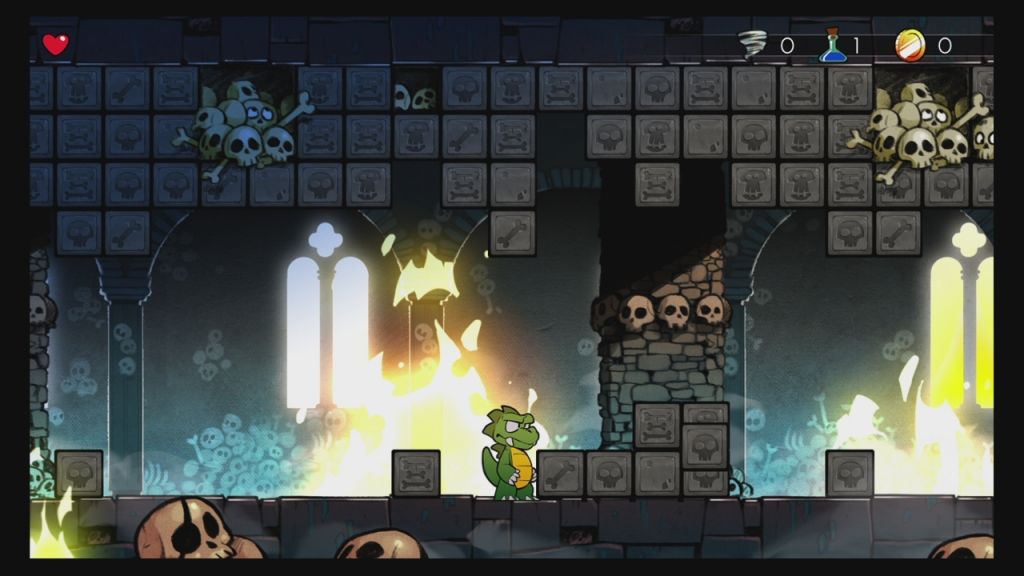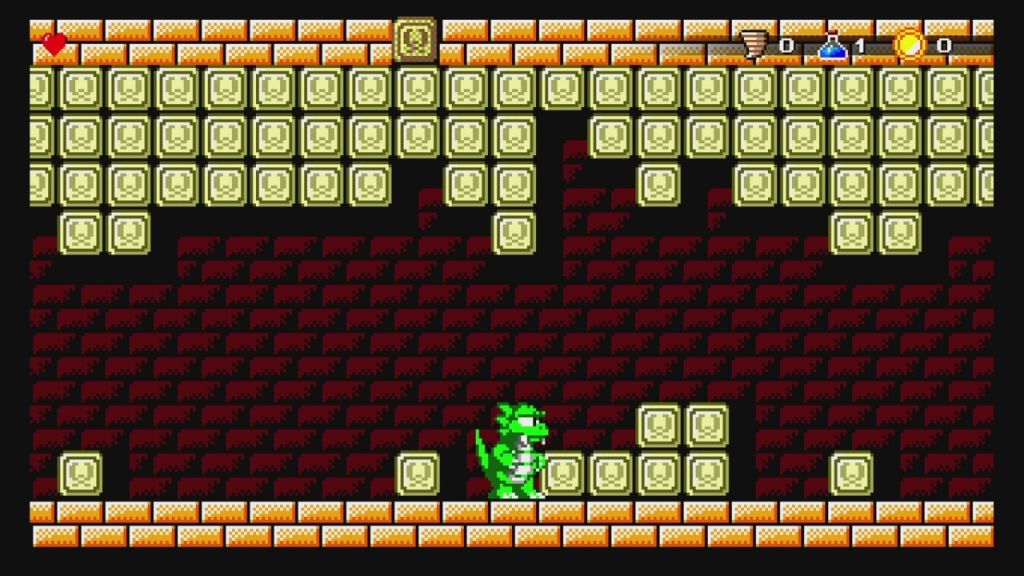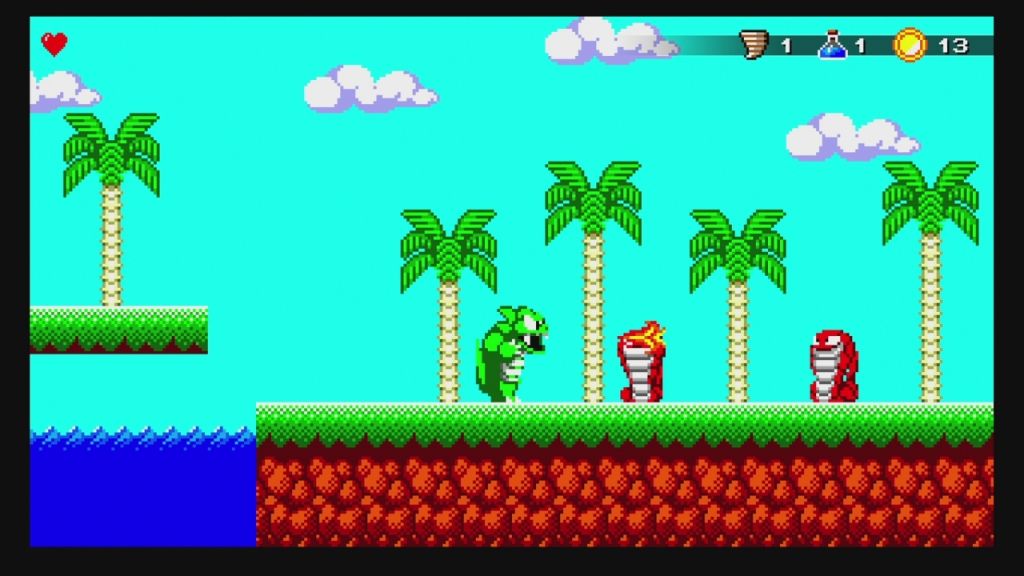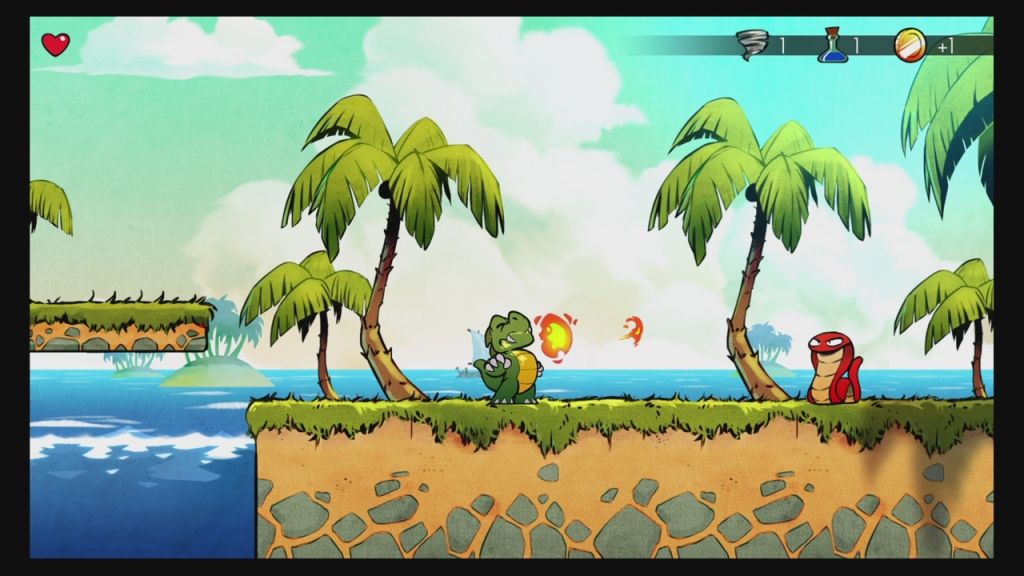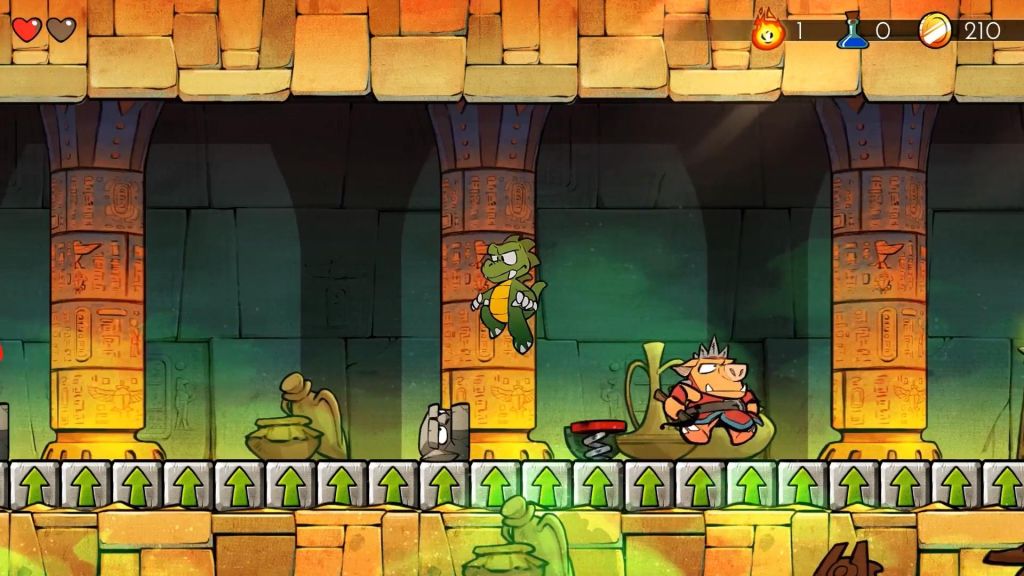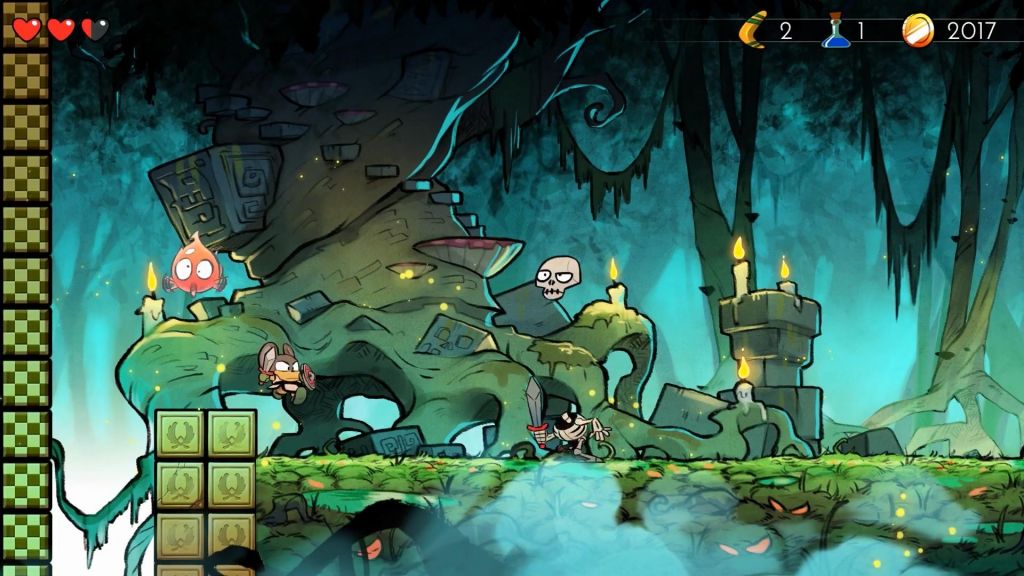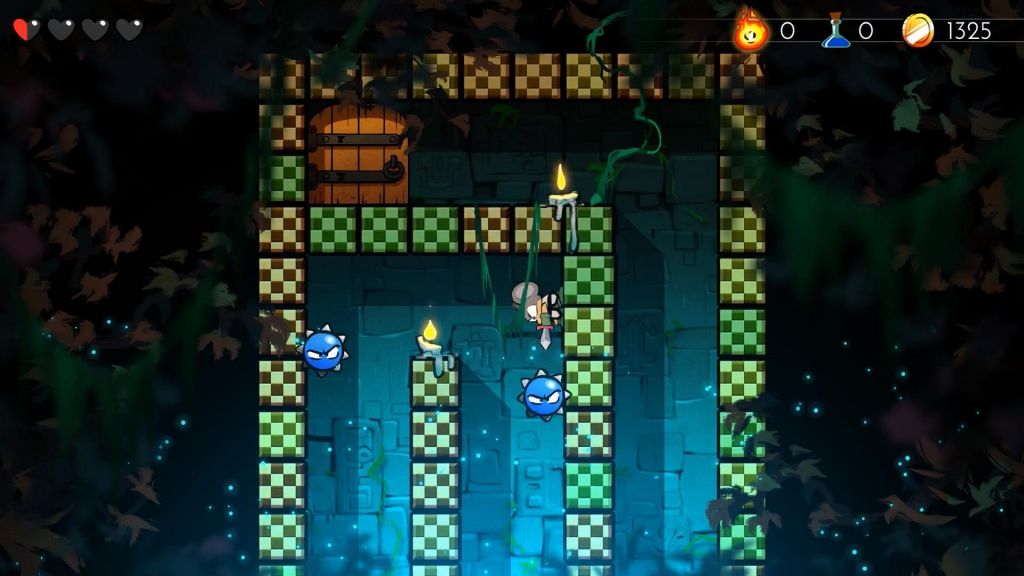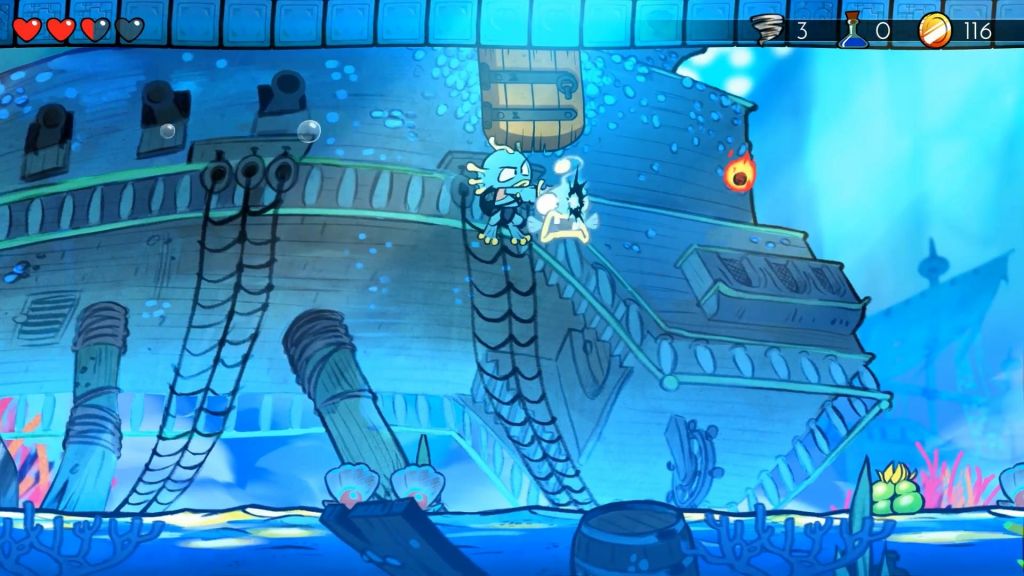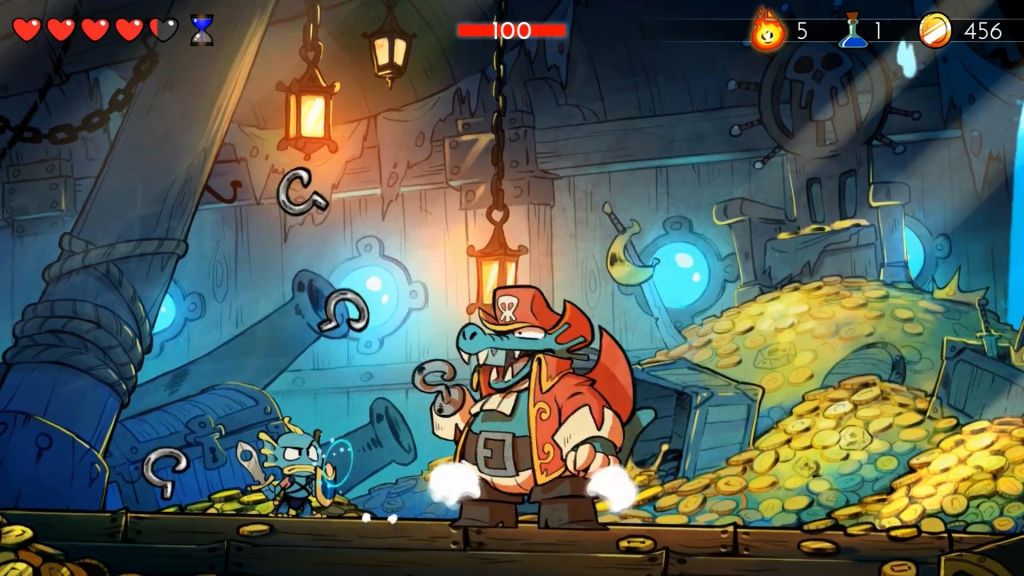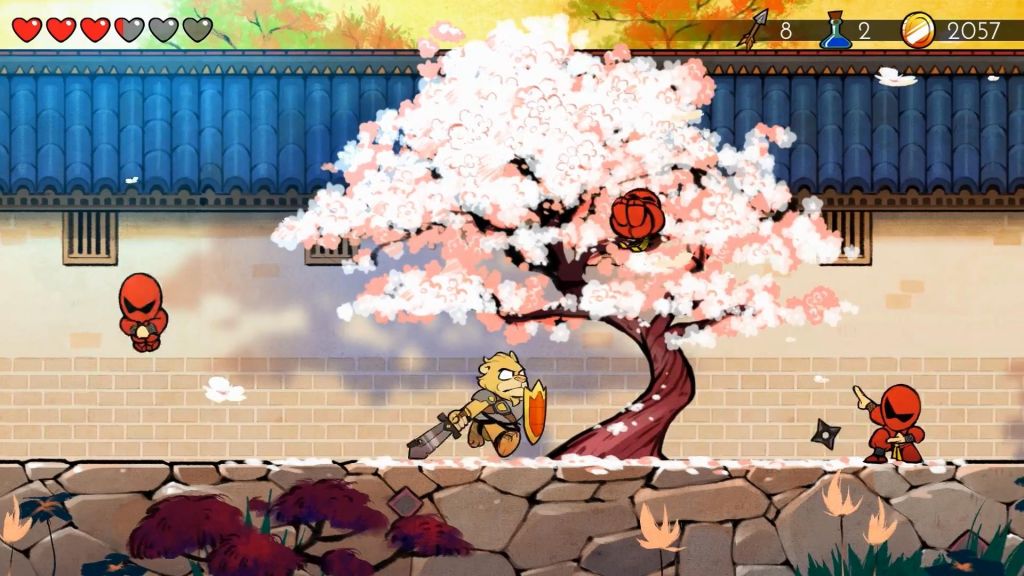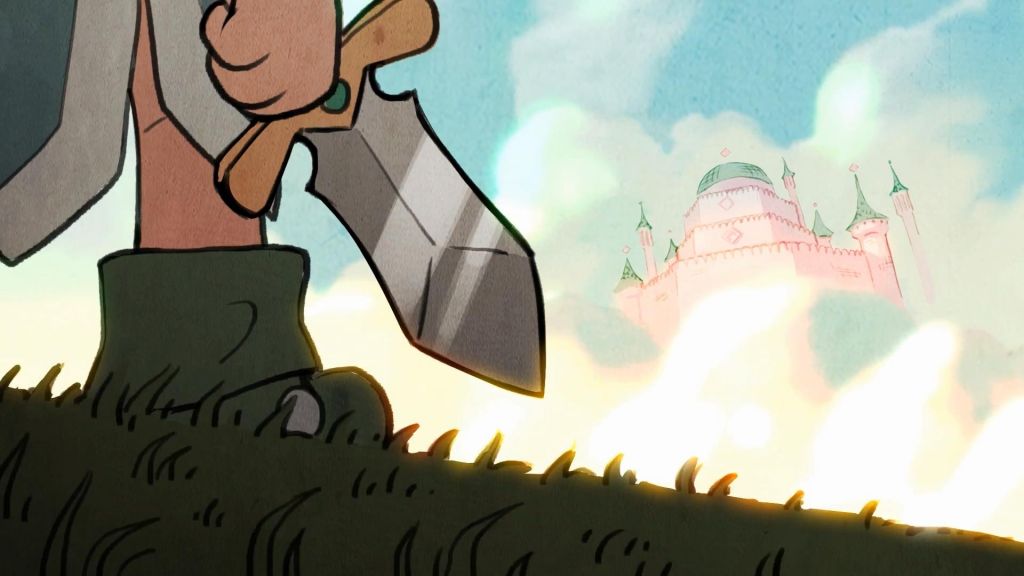Wonder Boy: The Dragon’s Trap
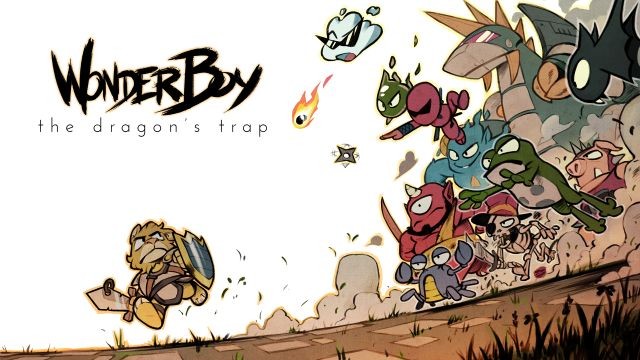
The history of the Wonder Boy series is complex, but highly entertaining. The original developers, WestOne, crafted the engine and retained ownership of it while Sega got the rights to the characters. The engine itself was later used for the Adventure Island games, as well as the sub-series within Wonder Boy known as Monster World. The series was in a bit of a legal quagmire for a while, but the developers at LizardCube worked out a deal with Sega and now we have a remake of Wonder Boy III: The Dragon’s Trap, only with a more modern look – if you so desire.
Wonder Boy III was a good choice to get a remake since it was the most well-known of the Wonder Boy series, and one that even got a re-release on the PlayStation 3. The Dragon’s Trap is quite unique in that you can use passwords from any version of the game and have them work on another – so if I want to play a bit of the PS3 version before going to bed and then wake up and play my PS4 version before going to work, I can resume my progress at any time. It’s a bit like cross-save – just not quite as convenient, but a bit cooler given how all-encompassing it is for the game.
Wonder Boy was a bit of a prototypical Metroidvania and gave you a fairly large world to explore and various character forms to turn into. Much like Symphony of the Night many years later, this 8-bit hidden gem of sorts allowed you to play the finale of the prior game before starting the all-new adventure. The meka-dragon’s curse turns you into different forms and gives every variant a slightly different feel.
The various character types feel similar enough to make transitioning from one to the other easy, but different enough to avoid feeling too samey. You start off as a human (either Wonder Boy or Wonder Girl), but then become a fire-breathing dragon, the wall and ceiling-running mouse, the sword-swinging lizard, a powerful lion, and then an agile hawk. Each form gives you weapons to fight with and some, like the lizard, give you a nice shield that can absorb projectiles and minimize damage. The lizard can also swim, while the lion can leap high in the air. Wonder Boy is a simplistic game in some ways – while it gives you a variety of forms, they aren’t radically different most of the game.
The mouse form is probably the most different, as it allows you to move up and down walls or run along ceilings to progress. Long-range attacks enter the fray thanks to its boomerang as well. The hawk gives you more freedom overall, but it isn’t like this is an open-world game – so that freedom is still restricted to a fairly small playable area. Each form has its own pros and cons, with the mouse having the shortest range attacks. With him, you’ve got to make sure to be on your A game with platforming so you don’t take needless damage due to timing a jump wrong and leaping right into an enemy attack.
You have a bit more leeway with the larger characters, who feel similar when it comes to jumping – but do offer up different abilities like swimming or shield defense. You also have a variety of magic items to use, and the tornado in particular will be a life-safer against enemies who are beneath you – but slightly out of reach unless you land a risky jump. Landing it properly means you can avoid damage and slash away, but not do so ensures either a swift demise via a bad fall or taking damage unless you use the tornado.
No matter which form you’re in, Wonder Boy controls fairly well. It’s definitely a tough game that will kill you a time or two – but you’ll never die due to input lag. Everything is nice and responsive, and you can run, jump, swim, spit fire, and throw boomerangs with ease. The game’s pacing is deliberate, but still fairly smooth. Those expecting something silky-smooth will be taken aback, as it is still rooted in something in the late ’80s. You will still go where you want – but there aren’t going to be any things like double jumps or mid-air jump movement.
Visually, The Dragon’s Trap revamps the original game’s graphics marvelously. This isn’t just a 16- or 32-bit graphical update on an 8-bit game. Every single part of the game has been redrawn to take advantage of modern HD displays, and things like basic grass and dirt that looked fine before, but could clearly be done better turn into richly-detailed versions of the same objects. Being able to just use a trigger to shift from 8-bit to modern art styles shows just how much work went into redoing the graphics. Animation is kept simple so that you can switch things out instantly and have everything move over perfectly without any oddities.
It would just seem weird to go from 8-bit to modern and then suddenly have the animation get silky-smooth. It would betray the original game and its flow, and fortunately, that isn’t an issue here. The increase in detail compared to the core game is outstanding. The various forms gain a lot of new life thanks to each having completely different shapes and far more detail than before. Tiny teeth can be seen on the fire-breathing dragon form, while the hawk gains a greater sense of fluidity with its wing movements and the world as a whole actually looks like a hand-drawn cartoon world now. It’s stunning and features some of the best lighting effects in a 2D platformer to date.
The sound design of The Dragon’s Trap is top-notch, with memorable songs that fit the original chiptune soundtrack – but have been given far more depth. The core music is enjoyable and it’s fun to switch between the 8-bit music and the modern stuff with either visual style. This means you can play the modern-day remake with the original soundtrack, or flip flop and play the original game with the remixed music for a more modern take. It’s nice to have that kind of variety, and keeps things interesting at all times.
Overall, Wonder Boy: The Dragon’s Trap is an outstanding remake – and one of the best examples of a full-on remake that we’ve seen in quite some time. It’s an early example of an open-ended platformer, and its minor mixture of RPG and platforming works nicely. It’s definitely a game that has aged, and the core game may not have aged as well as something like the original Sonic or Super Mario Bros. games, but it is still very well crafted. Anyone who grew up enjoying the original should check out the remake, while newcomers who enjoy 2D platformers will be right at home here.
Reviewed By: Jeremy Peeples
Publisher: DotEmu
Rating: 90%
——————————————————————————–
This review is based on a digital copy of Wonder Boy: The Dragon’s Trap for the PlayStation 4 provided by DotEmu.
 Game Over Online
Game Over Online